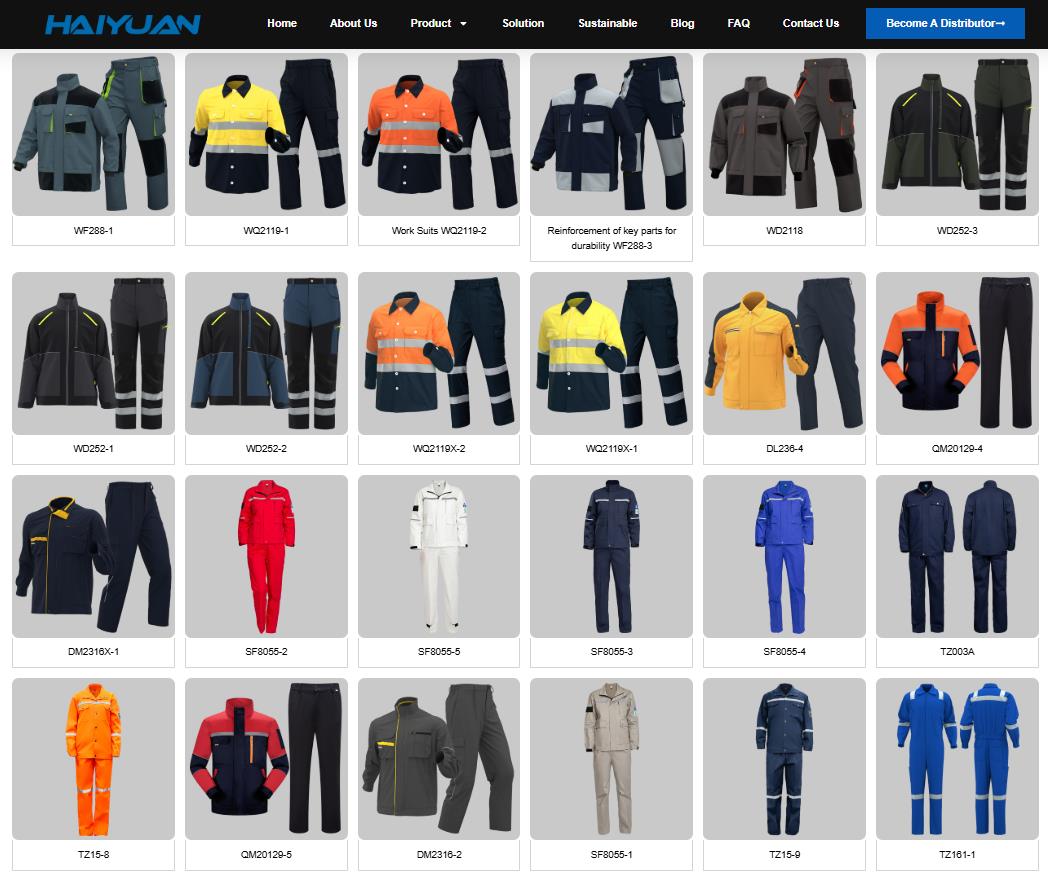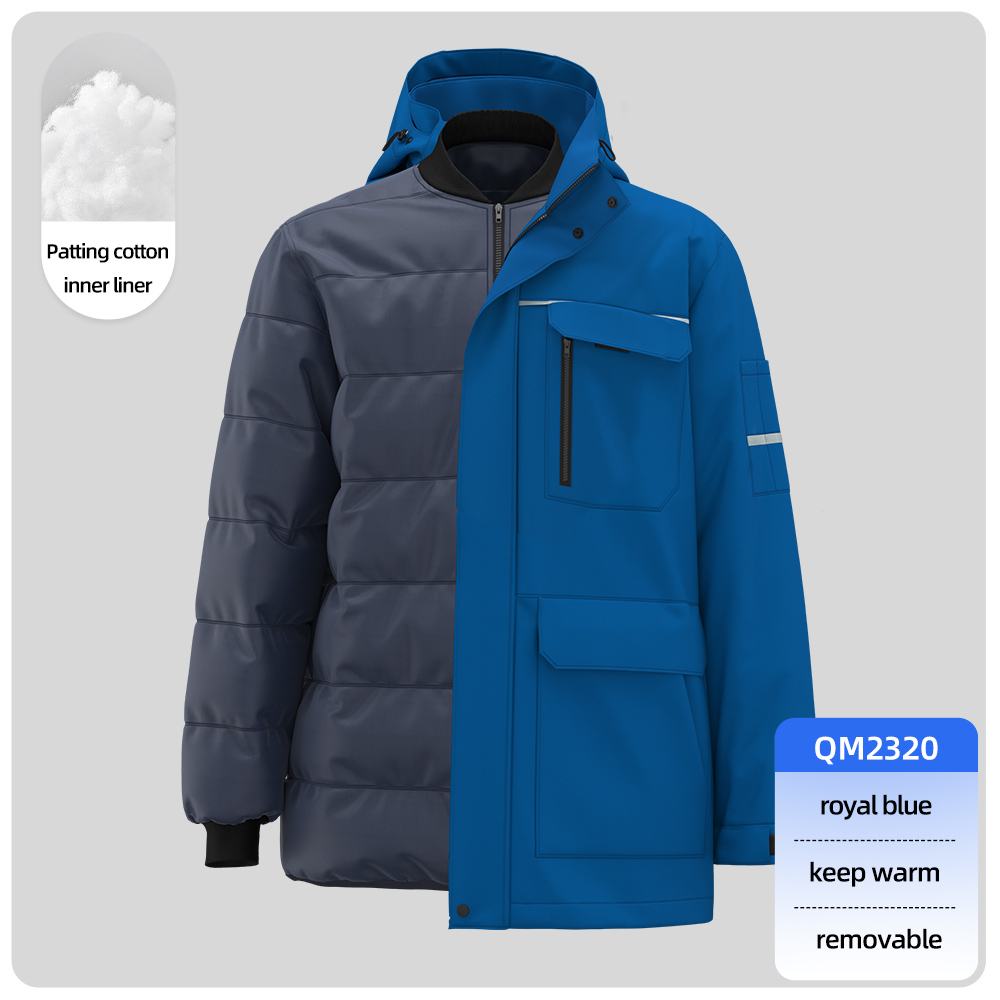When we talk about men’s workwear protective clothing, we’re referring to durable, functional garments and gear designed to protect men from specific workplace hazards while allowing for ease of movement and comfort during physical labor.
The best choices form a head-to-toe system, tailored to the specific job and its risks.
Here is a comprehensive guide to men’s protective workwear, broken down by category and hazard.
The Head-to-Toe System of Protection
1. Head Protection
-
Primary Hazard: Falling objects, impact, electrical shock.
-
Essential Gear: Hard Hat (Safety Helmet)
-
Key Features:
-
Type I: Protects from impacts to the top of the head.
-
Type II: Protects from top and side impacts.
-
Classes:
-
Class G (General): Reduces exposure to low-voltage electrical conductors.
-
Class E (Electrical): For electrical work (high-voltage protection).
-
Class C (Conductive): No electrical protection; lightweight for comfort.
-
-
2. Upper Body Protection
This is where the core “workwear” items lie, chosen based on the primary hazard.
-
Hazard: General Durability & Abrasion
-
What to Wear: Traditional Work Shirts & Jackets
-
Best Brands: Carhartt, Dickies, Walls.
-
Key Features: Duck canvas, denim, or tight-weave cotton; double-stitched seams; tool pockets.
-
-
Hazard: Low Visibility (Near Traffic/Machinery)
-
What to Wear: ANSI-Certified Hi-Vis Vest or Shirt
-
Best Brands: Reflexite, ERB Safety, prominent lines from Carhartt and Dickies.
-
Key Features: Fluorescent background (orange-red or yellow-green) with reflective tape. Must meet ANSI/ISEA 107 standard.
-
-
Hazard: Flame & Electric Arc Flash
-
What to Wear: Flame-Resistant (FR) Shirt & Jacket
-
Best Brands: Ariat FR, Carhartt FR, Bulwark.
-
Key Features: Made from inherent FR fabrics (e.g., Nomex, Modacrylic blends); won’t melt or continue burning when the ignition source is removed.
-
3. Hand Protection
-
Primary Hazard: Cuts, abrasions, impacts, chemicals, vibration.
-
Essential Gear: Task-Specific Work Gloves
-
Types:
-
General Purpose: Leather or synthetic leather palms (e.g., Mechanix Wear).
-
Cut-Resistant: Kevlar or high-performance polyethylene (HPPE) fibers (e.g., HexArmor, Magid).
-
Impact-Resistant: With padding on knuckles and back of hand.
-
Chemical/ Liquid-Resistant: Nitrile, neoprene, or rubber coating.
-
4. Lower Body Protection
-
Hazard: General Durability & Abrasion
-
What to Wear: Durable Work Pants (Dungarees)
-
Best Brands: Carhartt, Dickies, Wrangler Riggs.
-
Key Features: Canvas or heavy cotton twill; reinforced knees (often with double-layers or pre-installed knee pad pockets).
-
-
Hazard: Flame & Electric Arc Flash
-
What to Wear: FR Pants
-
Best Brands: Ariat FR, Carhartt FR.
-
Key Features: Match the FR rating of the upper body garment to form a complete FR system.
-
5. Foot Protection
-
Primary Hazard: Crushing, punctures, slips, electrical shock.
-
Essential Gear: Safety-Toe Work Boots
-
Key Features & Standards:
-
Safety Toe: ASTM F2413 standard. Look for:
-
Steel Toe (S)
-
Composite Toe (C) (non-metallic, good for electricians)
-
Aluminum Toe (A)
-
-
Puncture-Resistant Sole (PR): Protects from nails and sharp objects.
-
Electrical Hazard (EH): Reduces the risk of electric shock.
-
Slip-Resistant (SR): For oily and wet surfaces.
-
-
Best Brands: Red Wing, Timberland PRO, Wolverine, Keen Utility.
How to Choose: A Hazard-Based Guide for Men
| Your Job / Hazard | Essential Protective Clothing |
|---|---|
| General Construction / Carpentry | Hard Hat, Hi-Vis Vest (if needed), durable work shirt & pants (Carhartt), leather gloves, safety-toe boots. |
| Electrician / Utility Worker | Class E Hard Hat, Full FR Clothing (shirt & pants), Composite Toe EH Boots, voltage-rated gloves. |
| Welder / Metalworker | FR Clothing, flame-resistant leather gloves, welding jacket/coat, leather aprons, metatarsal guard boots. |
| Roadwork / Traffic Control | ANSI Level 2 or 3 Hi-Vis Shirt & Pants, durable pants, waterproof layer, sturdy boots. |
| Landscaper / Logger | Chainsaw protective pants (with cut-resistant lining), durable boots, gloves, eye protection. |
| Chemical Plant / Cleaner | Chemical-Resistant Coveralls (Tychem/Saranex), face shield, chemical-resistant gloves and boots. |
Key Principles for Selecting Men’s Protective Workwear
-
Certification is Key: Always look for the relevant safety standard label (ANSI, ASTM, NFPA, CE). This is non-negotiable for true protection.
-
Fit for Function: Clothing must allow for a full range of motion. It should not be so baggy that it gets caught on machinery.
-
Layer Smartly: Start with a moisture-wicking base layer, add your durable workwear (e.g., Carhartt pants), and top with your certified PPE (Hi-Vis vest, FR jacket) as needed.
-
Comfort is Safety: If the gear is uncomfortable, you won’t wear it correctly. Look for features like articulated knees, gusseted crotches, and breathable fabrics.
In short, the best men’s protective workwear is a system that starts with durable, comfortable base layers from trusted brands like Carhartt or Dickies, and is then supplemented with certified, task-specific PPE (FR gear, Hi-Vis, hard hats, gloves) to create a complete defense against the unique hazards of the job.





